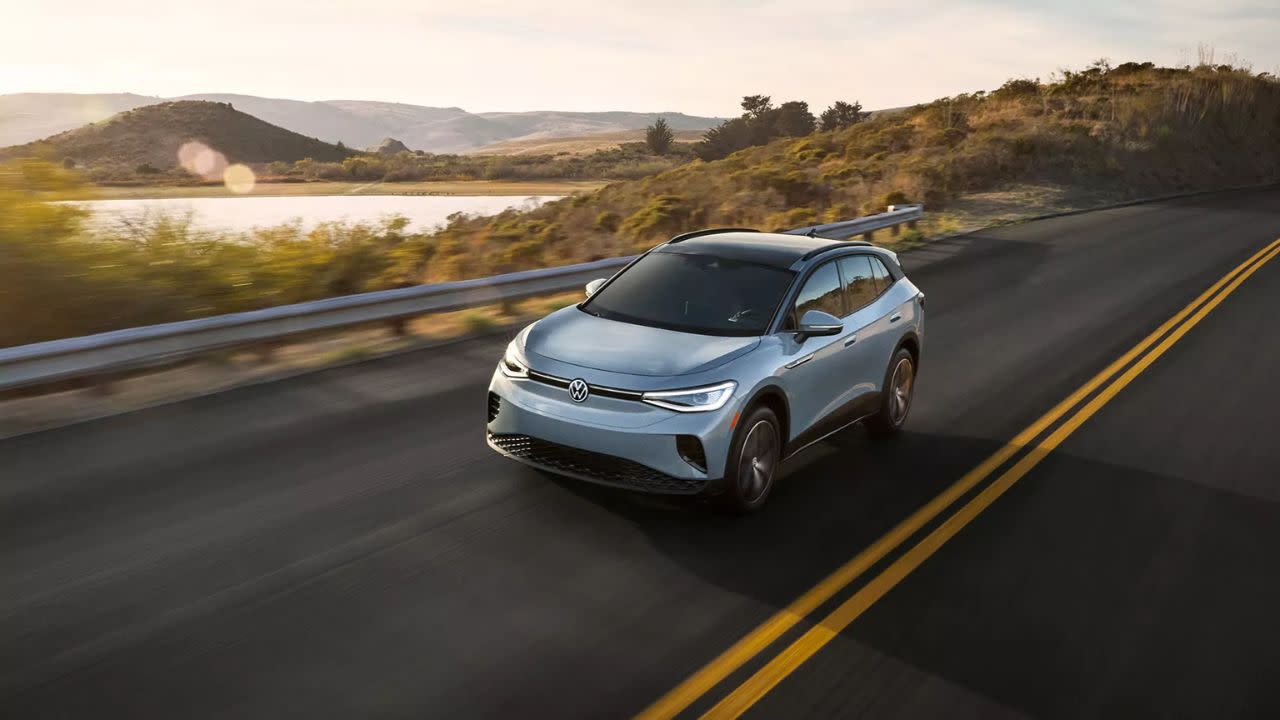Copyright yahoo

The GV60's distinctive styling — complete with a crystal sphere shift knob — either wins you over or leaves you scratching your head. Sales have been tepid, with the brand moving fewer than 5,000 units annually. The performance is there, especially in the Sport trim, and the interior quality is excellent. However, Genesis is still building brand awareness in the U.S., and asking buyers to take a chance on a luxury EV from a relatively new nameplate is a tough sell. Volkswagen ID.4 Here's a head-scratcher: the ID.4 should be everywhere. It's practical, affordable, built in America, and comes from a brand everyone knows. Yet VW has struggled to move them consistently, with inventory piling up at dealerships through 2024. The ID.4 isn't flashy, and its infotainment system has been criticized for being less intuitive than competitors. Some potential buyers have also been put off by early quality concerns and a somewhat bland driving experience. VW has been throwing incentives at the ID.4, which helps, but also signals that demand isn't matching production. It's a solid family hauler that deserves more attention than it's getting. Noted one driver on Reddit: "The ID.4 is more of a relaxed paced ride than other EV's I've driven. If you enjoy the sportiness of the Tesla then I would look elsewhere. Otherwise, it's an awesome car. I really enjoy driving it and it's super comfortable on long drives." Subaru Solterra Subaru's first EV shares its platform with the Toyota bZ4X, and unfortunately, it shares some of the same struggles. The Solterra offers standard all-wheel drive and that rugged Subaru vibe, but its range maxes out around 228 miles — unimpressive by 2024 standards(altough there's worse). Priced in the mid-$40,000 range, it's competing against better-equipped rivals with more range. Sales have been limited, with Subaru managing only around 3,600 units in all of 2023. The brand's loyal fanbase loves their Outbacks and Foresters for adventure-ready capability, but the Solterra's range limitations make it less practical for the camping trips and road adventures Subaru owners crave. It's a well-built vehicle that arrived with the wrong specs for its target market. Mercedes-Benz EQE SUV Mercedes went all-in on its EQ electric lineup, but the EQE SUV has been a slow burner. Starting around $78,000, it's positioned as a luxurious electric alternative to the GLE, but buyers have been hesitant. The swoopy styling doesn't resonate with everyone, and some critics argue it looks too similar to other EQ models. Sales numbers have been modest compared to Mercedes' expectations for the EV transition. The tech inside is impressive, with the massive Hyperscreen available, but the pricing puts it in a bracket where buyers might just opt for a traditional GLE or look at competitors like the BMW iX. It's a capable luxury EV that's still searching for its moment. Fisker Ocean Fisker's return to the automotive world with the Ocean SUV started with promise but quickly hit rough waters. The company struggled with production issues, software glitches, and customer service complaints throughout 2024. Sales were limited to just a few thousand units before the company faced serious financial challenges. The Ocean actually had some interesting features — a solar roof, sustainable materials, and competitive pricing in theory. However, buying a car from a startup always carries risk, and reports of quality issues scared away potential customers. The saga serves as a reminder that in the EV space, execution matters just as much as vision. Cadillac Lyriq Cadillac's gorgeous EV crossover should be a home run, but it's more of a solid double. The Lyriq features stunning design, a well-appointed interior, and GM's Ultium platform, yet sales have been steady rather than spectacular. Cadillac moved around 15,000 units in 2023, which isn't terrible but falls short of expectations for such a strong entry. Part of the issue is availability — production ramped up slowly, and dealer inventory has been inconsistent. Another factor is that Cadillac is still rebuilding its luxury credentials with younger buyers who dominate the EV market. The Lyriq is genuinely excellent, but it needs more time and visibility to reach its potential. Said one driver: "Had issues early on, getting parts is hard, but once it was fixed it's been great." BMW's flagship electric SUV is packed with technology and distinctive design, but its polarizing looks and six-figure price tag have limited its appeal. The massive kidney grilles dominate the front end, and you either love them or you don't. Sales have been modest, with BMW moving a few thousand units annually in the U.S. Inside, the iX is legitimately impressive with luxurious materials and excellent tech integration. The driving dynamics are strong, and the range is competitive at around 320 miles. However, at prices starting near $88,000 and climbing well past $100,000 for higher trims, the iX is competing in a rarefied space where every detail matters and buyer expectations are sky-high. Wait — didn't the R1T get great reviews? It absolutely did, and Rivian has built a genuinely impressive electric truck. The challenge isn't quality; it's volume and pricing. Starting around $73,000, the R1T is a premium product in a truck market that still skews toward affordability. Rivian produced about 50,000 vehicles total in 2023 across both the R1T and R1S, which is respectable for a startup but tiny compared to the overall truck market. The adventure-focused brand has a devoted following, but mainstream truck buyers haven't yet made the switch. Production capacity is increasing, and Rivian is working on more affordable models, but for now, the R1T remains a niche player in the massive truck segment. Volvo's performance EV brand launched the Polestar 2 with high hopes, but it's remained relatively under the radar. Sales have hovered around 15,000-20,000 units annually, which is modest for a vehicle in the critical $50,000 price range. The Polestar 2 is handsome, well-built, and offers engaging driving dynamics that enthusiasts appreciate. However, the brand lacks the dealership network and name recognition of competitors. Polestar's direct-sales model is convenient for some but unfamiliar to traditional car buyers. The vehicle itself is strong; it's the brand building that's taking longer than expected. As more Polestar Spaces open and the lineup expands, awareness should grow, but it's been a slow build. Lucid's luxury sedan is a technological tour de force with jaw-dropping range figures exceeding 500 miles in some configurations. It's beautifully designed, spacious, and positioned to take on the Tesla Model S and luxury flagships. So why aren't they flying off the lot? Prices start around $70,000 but climb quickly into six-figure territory for higher trims. Lucid produced about 6,000 vehicles in 2023, and while quality is high, the brand is virtually unknown outside EV enthusiast circles. Breaking into the luxury market requires more than specs; it requires heritage, service infrastructure, and trust. Lucid has the product, but building a luxury brand from scratch is a marathon, not a sprint, and the Air is still in the early miles. The EV market is maturing, but it's clear that compelling technology alone doesn't guarantee success. These vehicles represent billions in investment and genuine innovation, yet they're struggling to find buyers for various reasons — pricing, timing, brand recognition, or simply being overshadowed by more aggressive competitors. The good news is that competition drives improvement, and many of these vehicles will likely find their audience as production scales, prices adjust, and buyer awareness grows. The EV revolution has room for more than just the obvious winners, but manufacturers are learning that in this space, you need to nail the fundamentals: range, pricing, charging infrastructure, and giving buyers a compelling reason to choose your vehicle over the competition. These EVs aren't failures; they're just still searching for their place in a rapidly evolving market.



